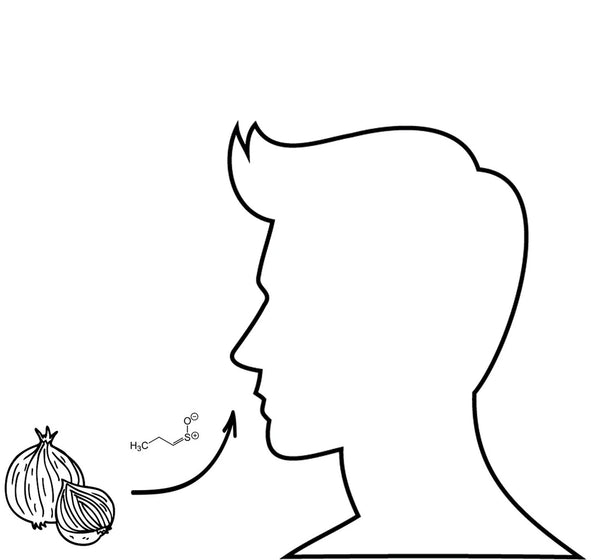Our Best Tips for Maintaining Your Knives
The ultimate guide to knives maintenance!
Chopping an onion is always a challenge for our eyes. Today, we’ll explain how to tackle this task without shedding a single tear. We’ll discuss techniques that involve using accessories like a lemon or a match, as well as the simplest methods to implement. But first, have you ever wondered why onions have this effect on us?
The onion is a vegetable that grows in the ground, just like potatoes or turnips. It absorbs sulfur from the soil to nourish itself, which gives it the sharp, pungent taste we appreciate. However, this is also what makes it a foe for our eyes.
When we cut an onion, its cells rupture, releasing a specific enzyme. When this enzyme interacts with the sulfur compounds in the onion, it creates a gas that irritates our eyes. Attracted to liquids, this gas dissolves in our tears, forming a mildly acidic compound that irritates the eyes.

In response, our eyes water, and our eyelids blink more frequently to protect themselves. This tearing is our body’s defense mechanism, washing away the acid and soothing the irritation. That’s why chopping onions can so often bring us to tears!
First, you can simply place your onion in a bowl of cold water for about ten minutes, or peel it under running water. This will prevent the gas from spreading and reaching your eyes.
This technique requires a bit more preparation. By freezing your onion for about fifteen minutes before cutting it, the cold will make it harder for the gas to diffuse.
The root of the onion contains most of the substances responsible for triggering the chain reaction. To avoid releasing these irritants, start by removing the root first. Then, cut the onion in half and peel away the outer layers. Place the onion flat on the cutting board and make horizontal cuts. Next, make vertical cuts from left to right, and finally, complete the process by making vertical cuts with the knife handle facing you.
We used the Santoku knife and the paring knife from the PAKKA collection.
If you're near a window or a range hood, take advantage of them! Proper ventilation in the room significantly reduces the effects of the onion, as the gas disperses more easily and doesn't stay concentrated around you.
As we’ve seen, these gases are attracted to moisture, which is why they concentrate in your eyes. But you can take advantage of this characteristic by using another source of water, such as your mouth. Chewing gum with your mouth open is an effective way to prevent the onion gases from reaching your eyes.
You can also place a wet cloth or paper towel on your work surface to draw the gas away from your eyes.
It often happens that people wearing glasses experience fewer tears when cutting onions, as their eyes are protected. For a more effective barrier, you have several options depending on your fashion style and the equipment you have available. Swimming goggles, diving masks, or ski goggles all make great defenses against onions while reminding you of your last holiday.
One technique is to place an unlit match in your mouth so that the gas is drawn to the sulfur at the tip of the match. Not only is this effective, but it’s also quite amusing for the other members of your household to watch.
If you’re not fond of looking silly, you can always light a candle and place it near your work surface. The gas produced by the onion will be drawn to the flame rather than your eyes.
Bread crumbs can also be a powerful ally when cutting an onion. Place a piece on the tip of your knife or in your mouth without eating it to absorb much of the gas.
You can also dampen the blade of your knife with lemon juice, as its acidity helps limit the spread of the gas.
No matter which method you choose, remember that a sharp knife is your best ally. A sharp knife allows for a smooth, clean cut without damaging the onion, which significantly reduces the spread of the tear-inducing compounds. This way, you cut more efficiently and minimize the chances of tearing up.
Want to know how to keep your knife sharp for longer? Check out our article on knife maintenance!